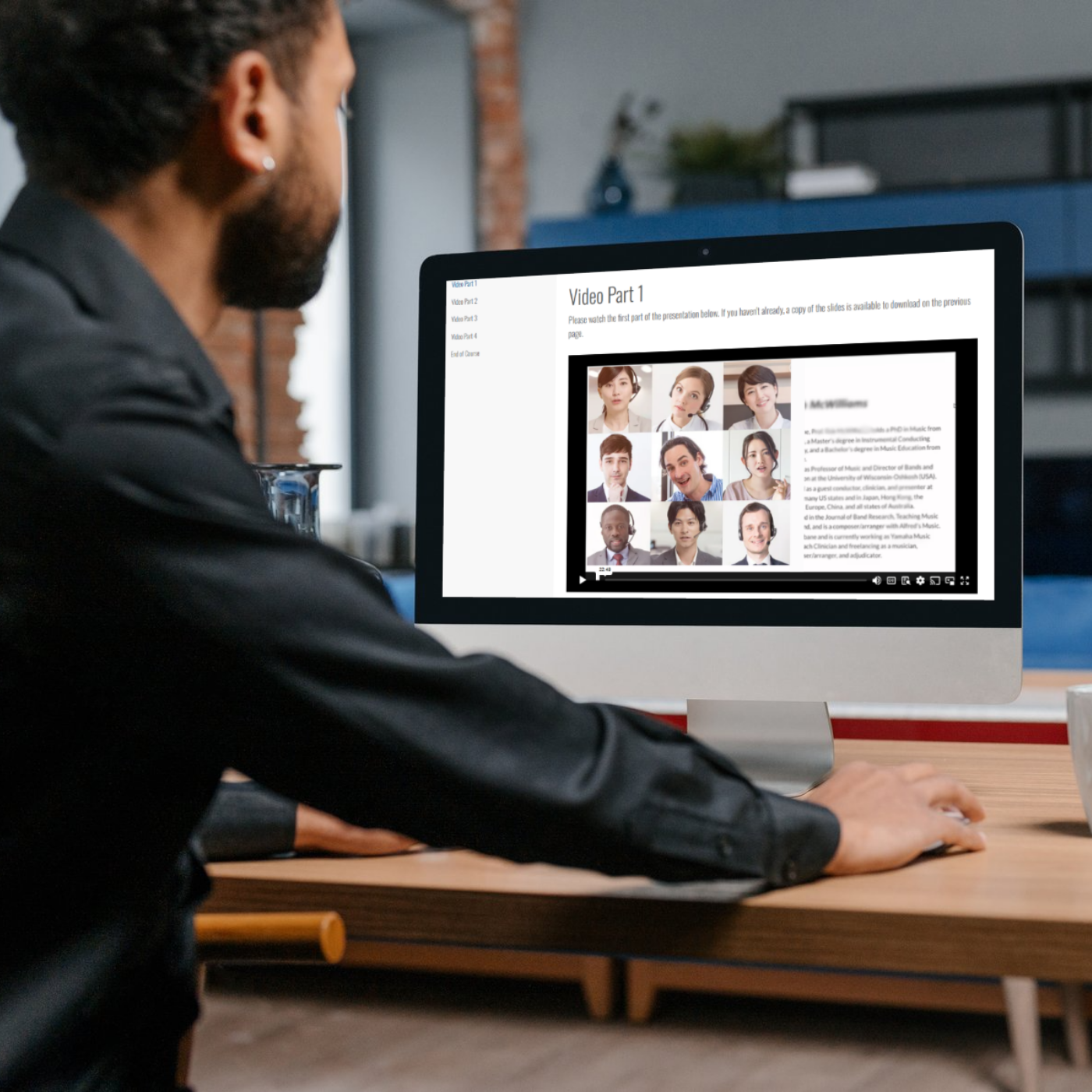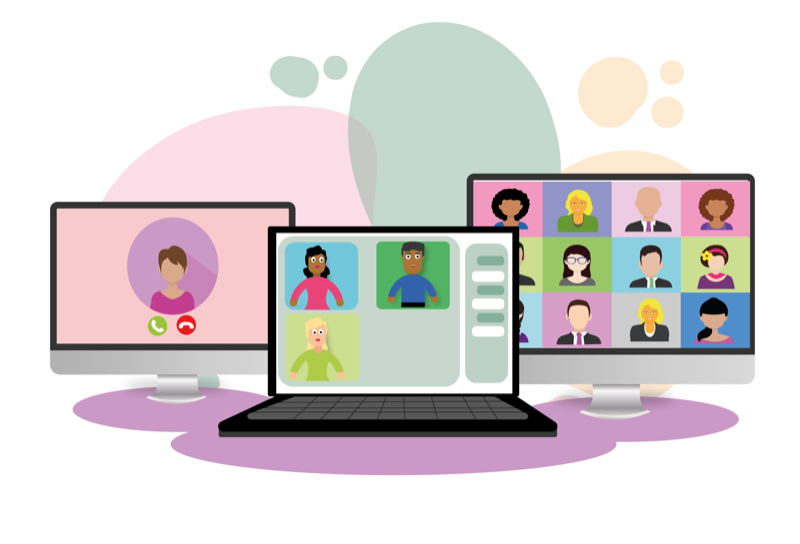Don't Just Host a Webinar, Sell a Course: Turn Live Events into Evergreen Revenue
Your association hosts fantastic webinars. Your members show up, they learn, and they engage. But what happens a week later? That valuable content,...

One of the most important functions of industry bodies and trade and professional associations is to provide members with continued professional development (CPD) while also providing a forum for members to network and learn from each other.
To do this, many offer member training and networking in face-to-face situations such as annual conferences, training workshops and networking events. The problem with the in-person model is the time and cost involved in delivering it that way, both for the association and the members who need to take time out of their schedule and travel to attend events. Now, with COVID-19 essentially shutting down huge parts of the economy, it’s impossible to host in-person conferences, workshops or networking events.
The solution is virtual events, which allow associations to deliver training and increase engagement for more members more often at a lower cost while generating much-needed revenue at a higher ROI. Pivoting planned in-person events to online events and continuing to plan new programs during this time of social distancing may even result in more attendees than usual.
While it's unlikely that virtual conferences will ever fully replace the real-life experience, there are plenty of advantages, and now’s the time to try it.
A virtual event is much shorter than a live event, usually a few hours rather than several days, and sessions can be shorter too. Thirty minutes with some questions is a good length, 60 minutes at a maximum.
It's recommended that you run a single stream. Having multiple virtual rooms that attendees have to navigate through adds unnecessary complexity.
Some virtual events run separate “rooms” for virtual networking but this can distract from the main sessions. Instead, offer short breaks between sessions where people can use these other channels to meet. In virtual events with many hundreds of attendees these smaller chat rooms allow people to connect more meaningfully.
Just as at a traditional conference, have trained volunteers to help host the virtual rooms, make sure people know where to go and resolve any technical issues.
Virtual events allow you to access speakers who otherwise couldn’t or wouldn’t have been able to attend your traditional event.
Start with speakers you already know. The trust you have in each other from your existing relationship will make your first virtual event less stressful.
It helps if some of your speakers have a large social media following of their own. This will bring in viewers you otherwise wouldn’t have tapped into, and allow you to start a relationship with those people directly.
Just like a face-to-face conference, a good host is essential. Your MC can open the event, introduce speakers and curate questions at the end of sessions.
Having at least some speaking content pre-recorded allows you to do quality control and it reduces the potential for tech failures on the day. You can stream pre-recorded talks and have the presenters join in at the end for Q&A.
It’s best if your speaker talks directly to camera and if they have accompanying slides, show them alongside the speaker in a split frame. Make sure your speakers light their faces from the front and have a good headset or free-standing microphone – built-in computer mics just don't cut it.
Ask speakers to send through a short test video to make sure you’re happy with how it looks and sounds before they record the whole thing.
Add subtitles to pre-recorded content to make your event more accessible, especially to those with hearing impairments. Plus, subtitles can be translated later, opening up your event to an even wider audience.
For a live event, have your speakers attend at least one practice session so they can get familiar with the technology, lighting and sound and you can hone your operations, anticipate problems, and visualise how the recordings will look.
Put all the right links to be in the right virtual places at the right times into a document to make it easy for speakers on the day.
Contact speakers early and often through personal emails with follow up phone calls. And if it’s a live event, consider having an emergency back-up speaker.

Modern platforms make it possible to run a large-scale event with minimal manpower. You’ll need tools for promotion, managing tickets, follow-up surveys, payments, chatrooms and, of course, video delivery. You'll also want a dedicated event website or landing page depending on the duration of your event and your existing toolset you may need to look at a dedicated web hosting service.
To plan and execute your event, look to programs such as Slack with public and private communication channels that can be used before, during and after.
For the event itself, there are plenty of video conferencing platforms to choose from, including Zoom, which is a great choice because so many people already use it, and Crowdcast, which offers a range of useful features.
It helps to use social media channels to generate engagement before your event. Twitter is great, but whatever platform you have the largest following on is probably your best choice.
People tend to feel virtual events should be cheaper than their real-life counterparts but you still need to cover your costs at the very least.
Use early bird deadlines to create a sense of urgency. Because virtual events don’t necessarily sell out, attendees can be lackadaisical about booking and ticket sales often spike the day before or the day of an event. It may be beneficial to you to know how many people will be attending.
There is no shortage of ticket-selling platforms, most of which charge a percentage or fixed fee per ticket. Eventbrite, Cvent and BookingRooster are all good choices, but if you already have an e-commerce feature on your website or through your membership management system, consider selling tickets there as well or instead.
After your attendees register for the virtual event you can send out pre-event information in the form of an online course. Many ticket selling platforms can plug in to other systems like Intuto to let you register your attendee into a course providing information on each speaker, what the schedule looks like etc. You can then send out reminders to ensure everyone has been briefed on the event.
It’s important to keep participants involved to avoid your conference feeling like a webinar and risking people zoning out.
Take advantage of functions of your video streaming platform; most allow text chat alongside the video which lets your team and speakers chat with attendees and answer questions. Speakers can ask questions in their videos and prompt viewers to type answers. Read comments and questions during the live segments of your stream so attendees feel more involved – an MC can help in relaying and moderating comments. You can even consider running competitions or surveys throughout the day.
If your livestream falls apart, pre-recorded sessions give your audience something to watch while you fix it. And prepare your ‘technical difficulties’ emails and web pages in advance so your audience knows what to do if something goes wrong. Don’t panic if not all your registrants actually attend the event, just send out the recorded meeting to everyone afterwards.
If it doesn't go 100% to plan, don't be discouraged. Document your learning and put processes in place to address shortcomings next time.
Want to know more? Check out our Intuto course templates below, or meet with us to discuss your organisation's needs.

Your association hosts fantastic webinars. Your members show up, they learn, and they engage. But what happens a week later? That valuable content,...

Of the eight billion people in the world, approximately 4.55 billion of them use social media. And that number is growing all the time.

Organising an event of any size is a challenge, and can be extremely stressful. There are a thousand things to think about: not least of which is...